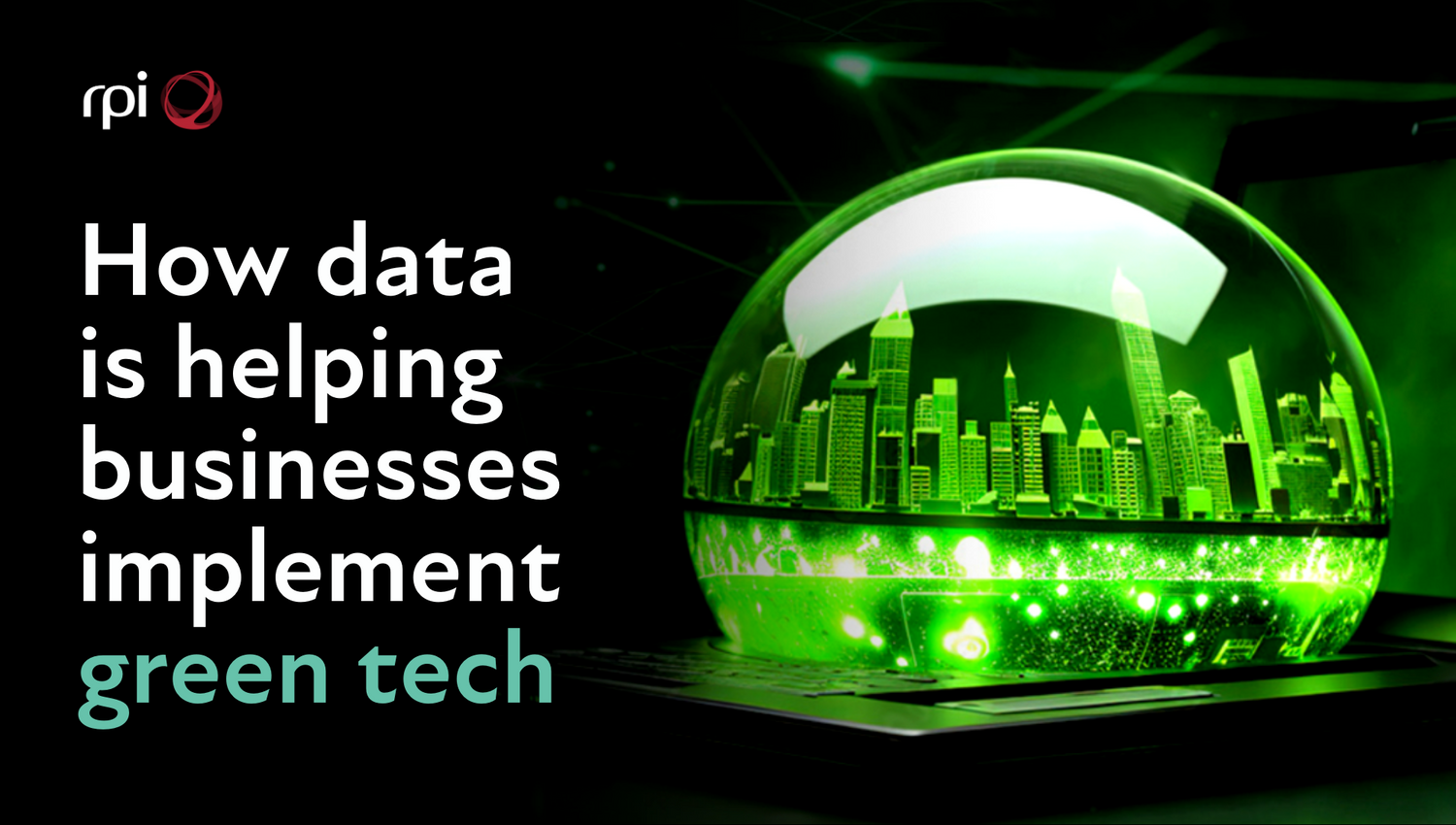There are almost 45,000 greentech startups in the world, and they raised over $111bn in 2021 alone. There is no shortage of green tech solutions. That leaves a business with two questions: what to use and how to use it.
That’s where data comes in. It will help you determine where your operations are the least green, as well as the difference a solution could make, the ROI it could offer, and how you could optimise it to achieve even more green returns.
Here’s where green tech makes the most difference, and how data enables green transformation.
The Internet of Things (IoT)
IoT consumes and produces incredible volumes of data, which means that it can reveal and optimise your green performance.
For fossil fuels, IoT devices can track and report your emissions, and help you reduce them through efficiency measures, or by revealing data that shows you how and where switching to renewables would have the most impact.
If you have a fleet of vehicles with internal combustion engines, and you can’t yet switch to EVs, IoT data reveals optimisations that you could make which mean fewer overall miles on the road.
If you use renewable energy sources like solar or wind power, IoT devices report output and efficiency, both of which you can improve through having the data. IoT also means smart devices that not only use power intelligently, e.g.distributing heat only where it’s needed, and drawing power from wherever there may be a surplus.
IoT data underpins every aspect of green transformation.
Uncovering hidden potential for green transformation
It’s easy to be conscious of emissions when they’re immediate. Things like vehicles have obvious impacts because they directly burn fossil fuels. Greening transport is an excellent step, but because it’s a very visible change, it can easily become an accidental greenwash.
Electrifying a company fleet reduces tailpipe emissions, but might fool a business into thinking its green work is done. There is far more potential. For example, reconfiguring packaging could save 5% of a business’s CO2 emissions.
The environmental impact of your supply chain (known as scope 3 emissions) happens away from your operations, but still very much belongs to your business because you create the demand for other businesses that emit carbon. Having the data available underlines that fact and reveals a fuller extent of the impact.
IT is another major area where the environmental impact is both substantial and disguised.
IT
IT lacks overt emissions indicators like engines and exhausts, but data reveals the otherwise hidden impact.
Most businesses are aware that we have a digital carbon footprint. Many don’t appreciate the extent of the contribution that IT makes to global emissions. Some studies find that it contributes roughly the same CO2 as the airline industry.
Assessing your digital environmental impact involves looking at each element as well as the whole. That was you’ll reveal ‘easy’ wins, or at least the most obvious starting points. For example, data centres are using 10%-30% more electricity every year due to increased usage, and without monitoring that actively, businesses probably won’t be aware of their consumption, and whether they need a greener option(like cloud computing, which can be up to 93% more energy-efficient).
Visibility and responsibility
Everyone in your business could care genuinely about carbon emissions, but do very little about it. That’s partly because they have busy roles and urgent deadlines, partly because of the diffusion of responsibility — they know things have to change, but don’t feel that they’re empowered to do anything, or that it sits with them.
Especially with the assistance of IoT, businesses can make emissions and environmental impact data both available and specific. Teams will be able to understand exactly which of their activities impact emissions, to what extent, and what they can do about it. The immediacy of that knowledge will motivate and enable all levels of the business to change.
How to implement data-driven green transformation
Like any tool, data is only as good as the people who use it. You need people who can interpret green data, who can also understand it in a business context and apply it commercially. Most crucially, you need leaders who can ask tough questions, and are unafraid to challenge the business.
Those people are sought-after, and in short supply, but RPI has a network of green specialists looking for their next role.
Contact people@rpint.com.



